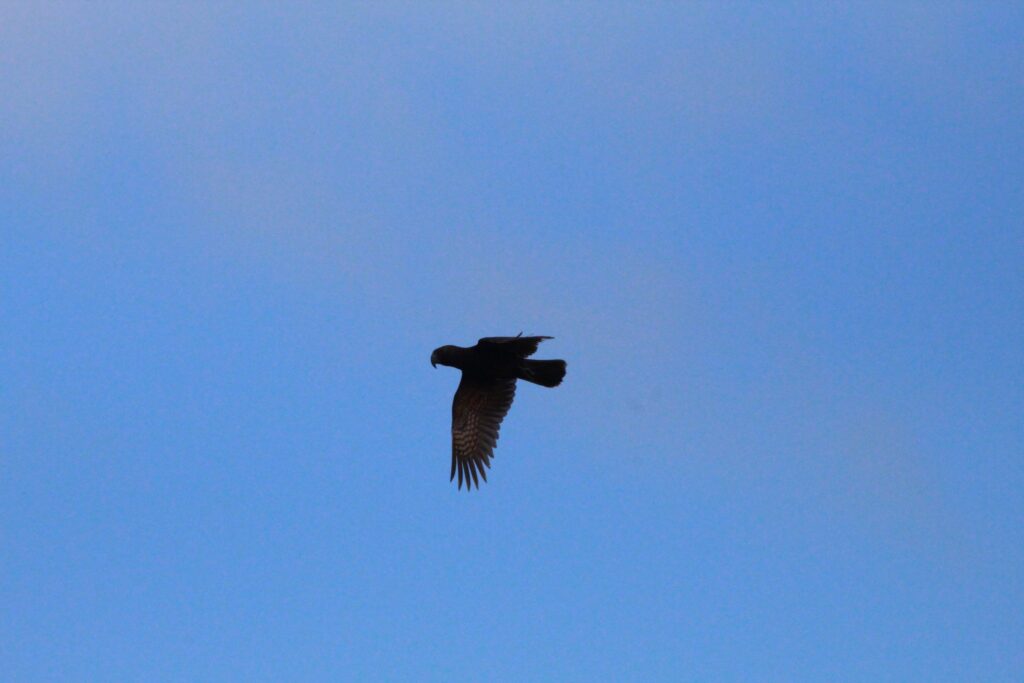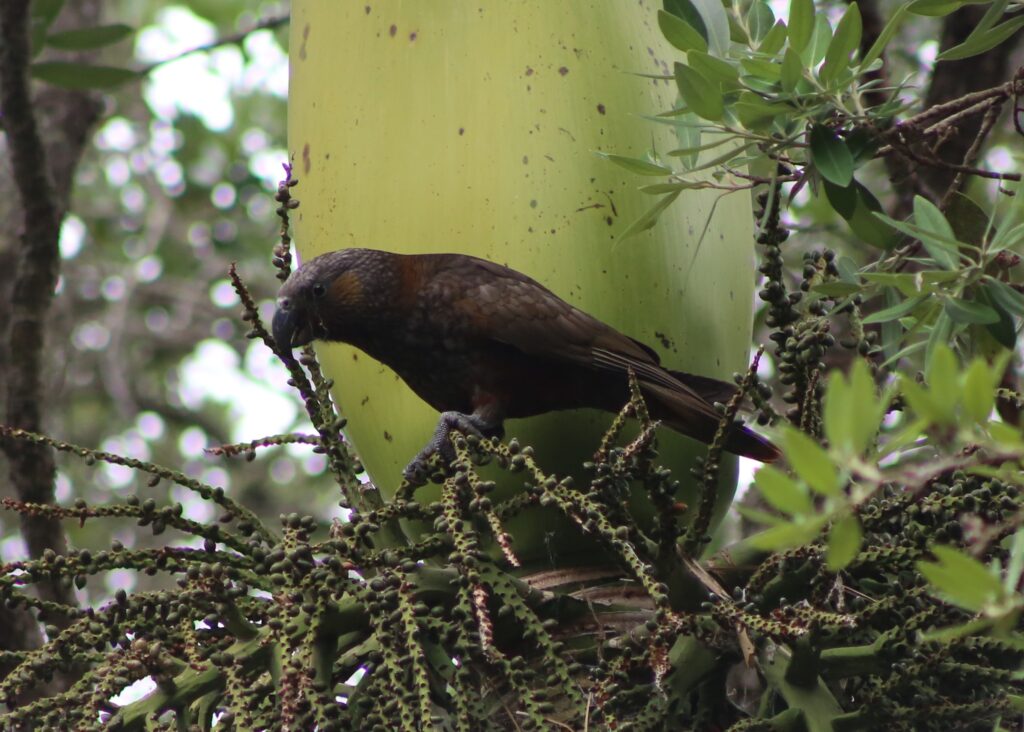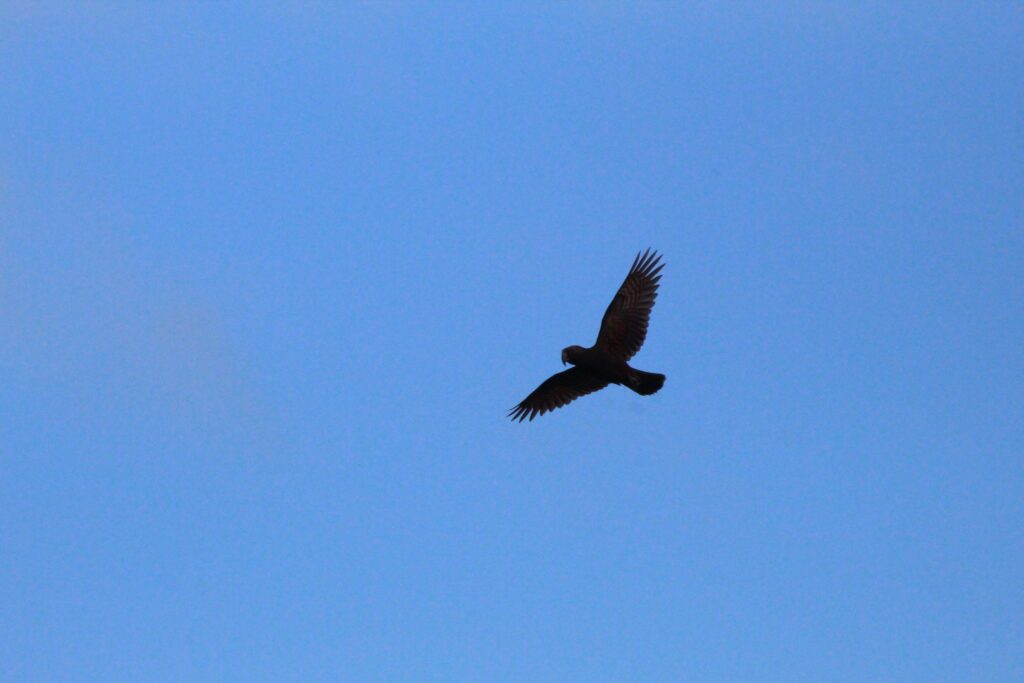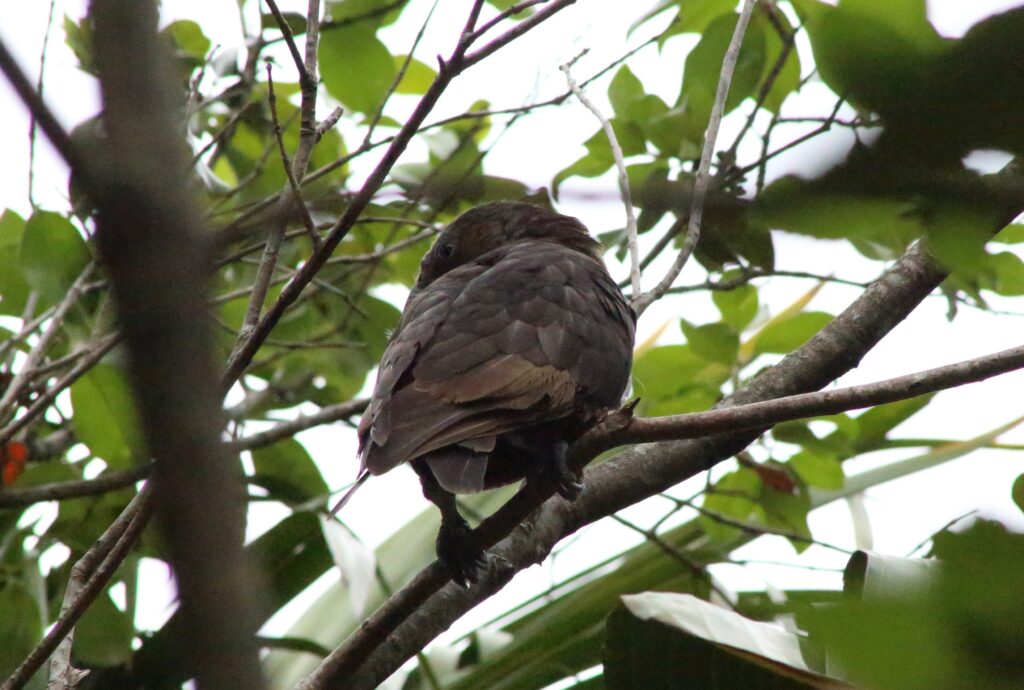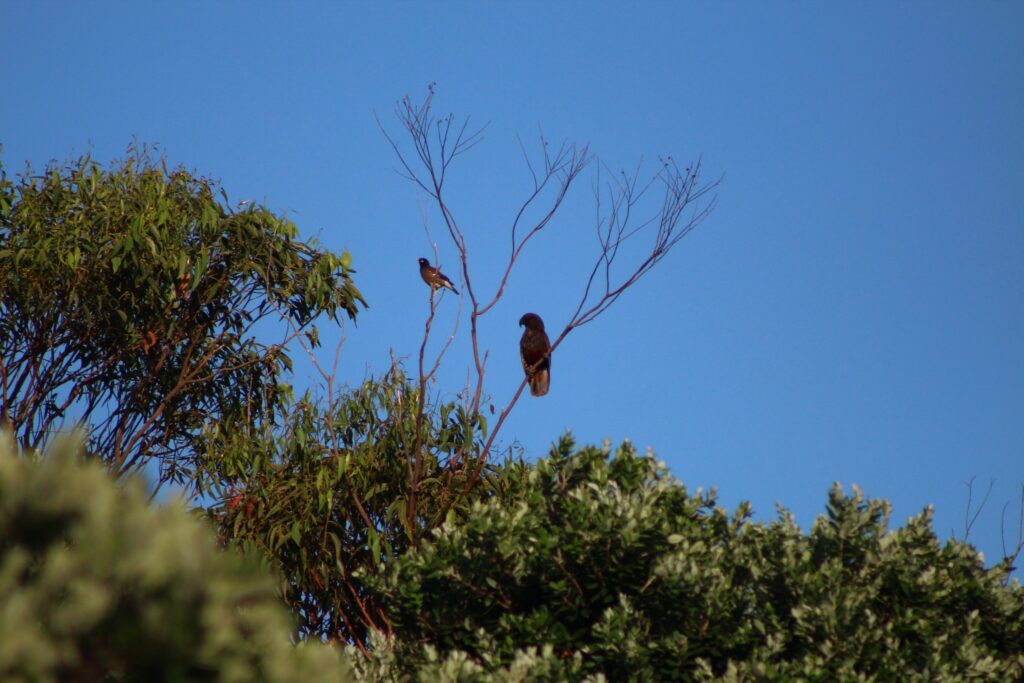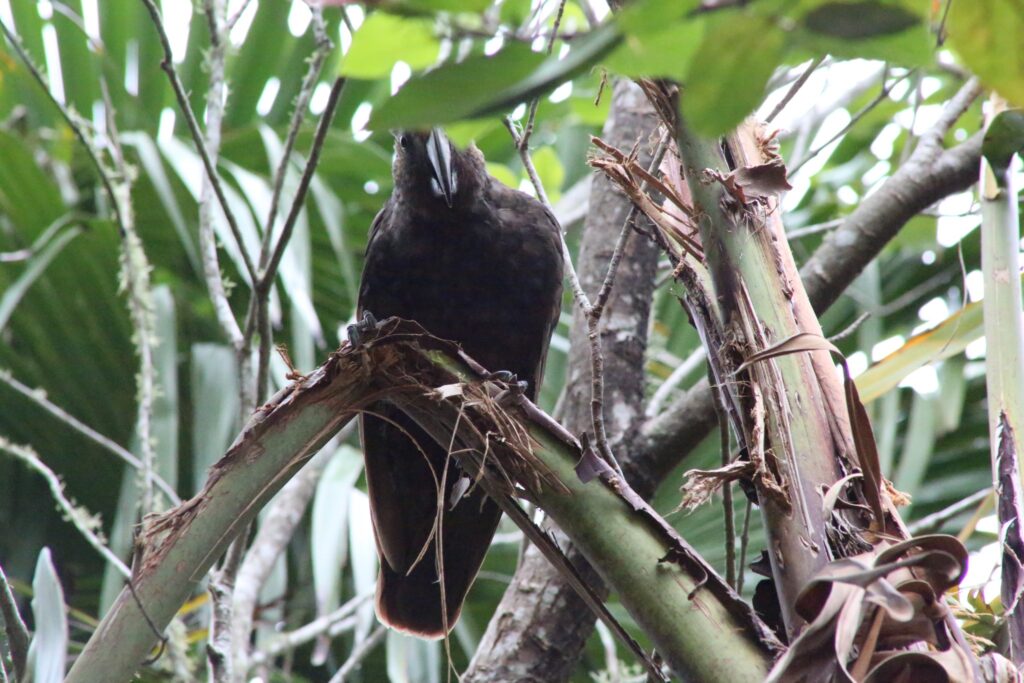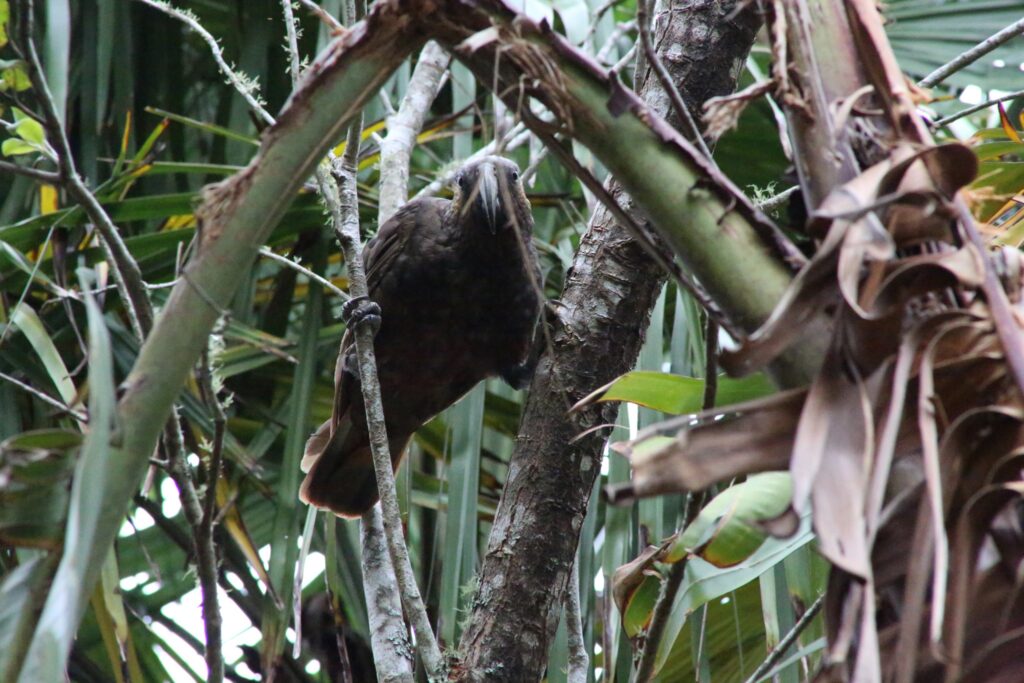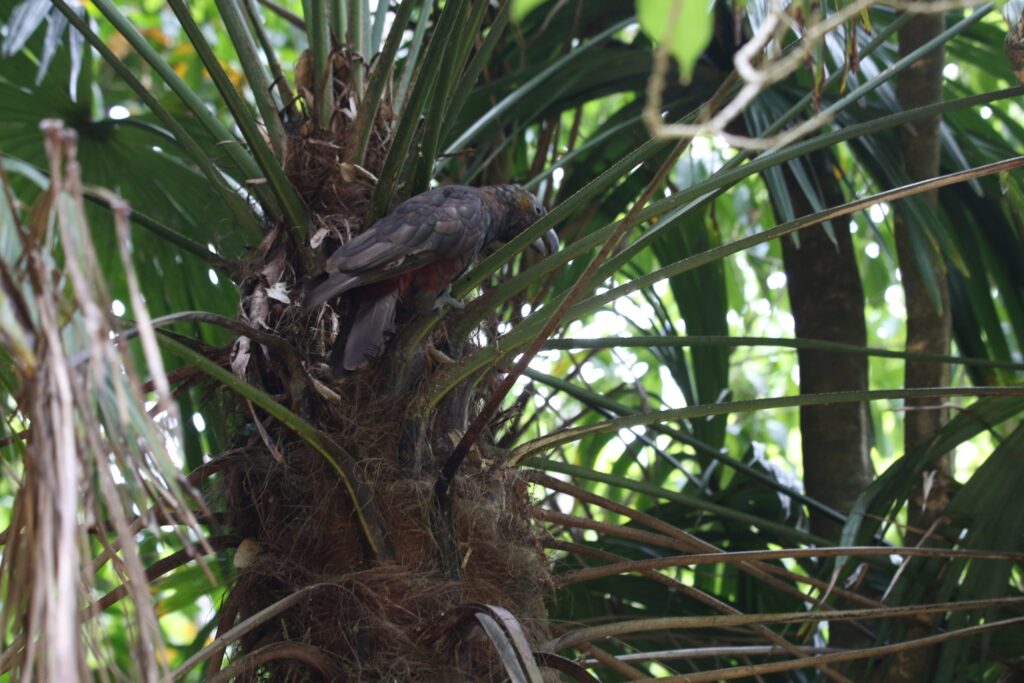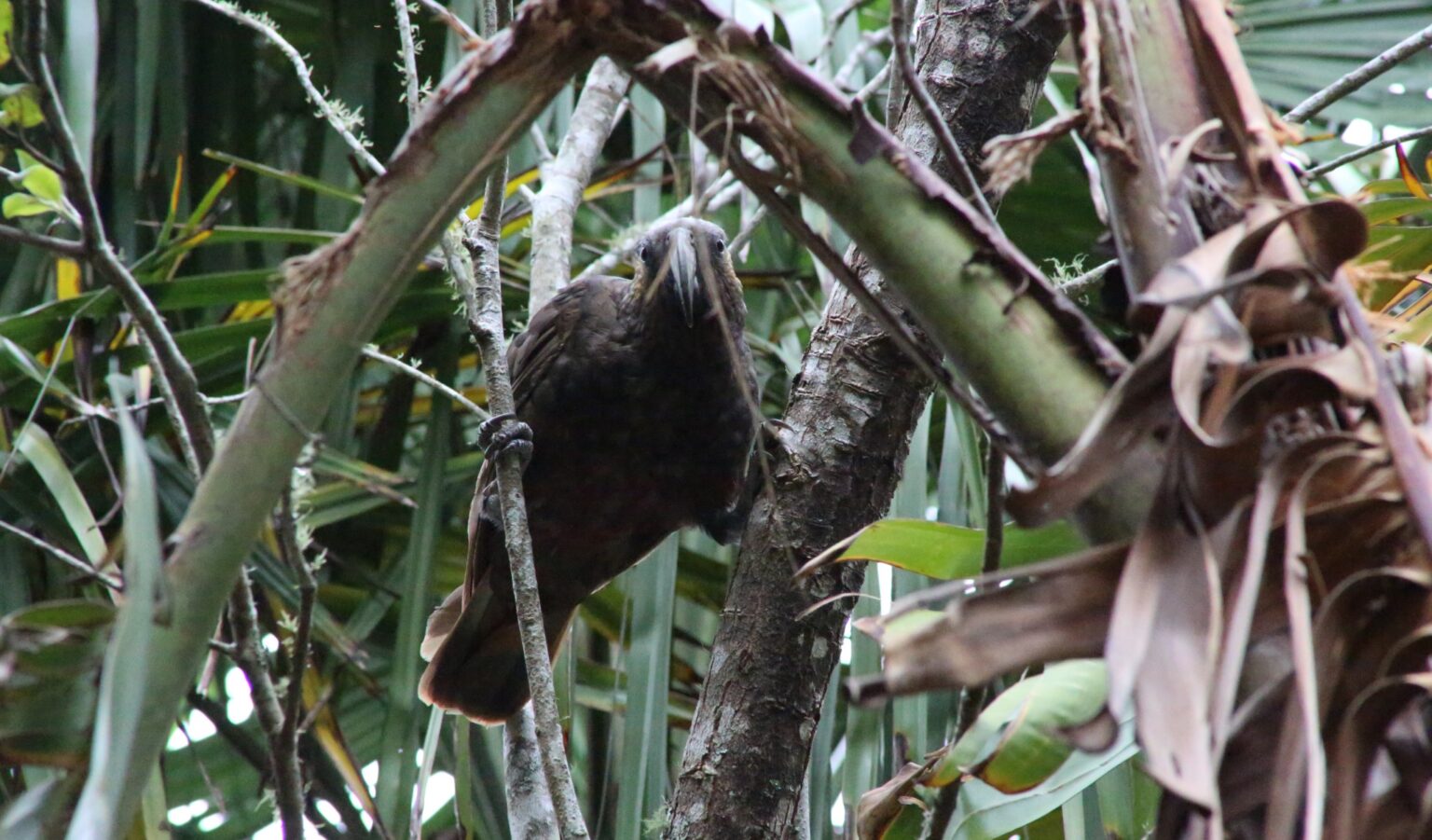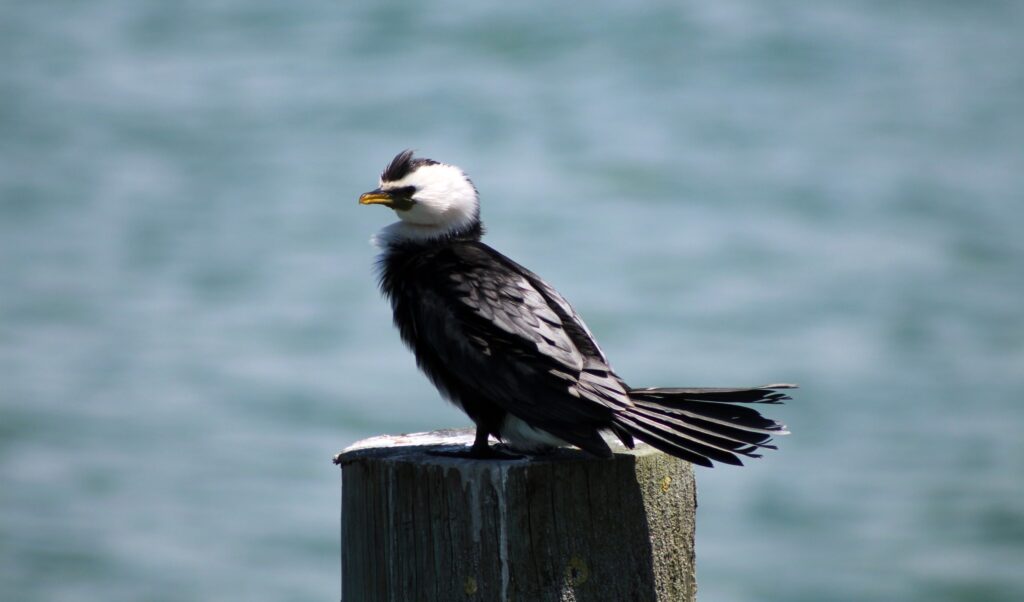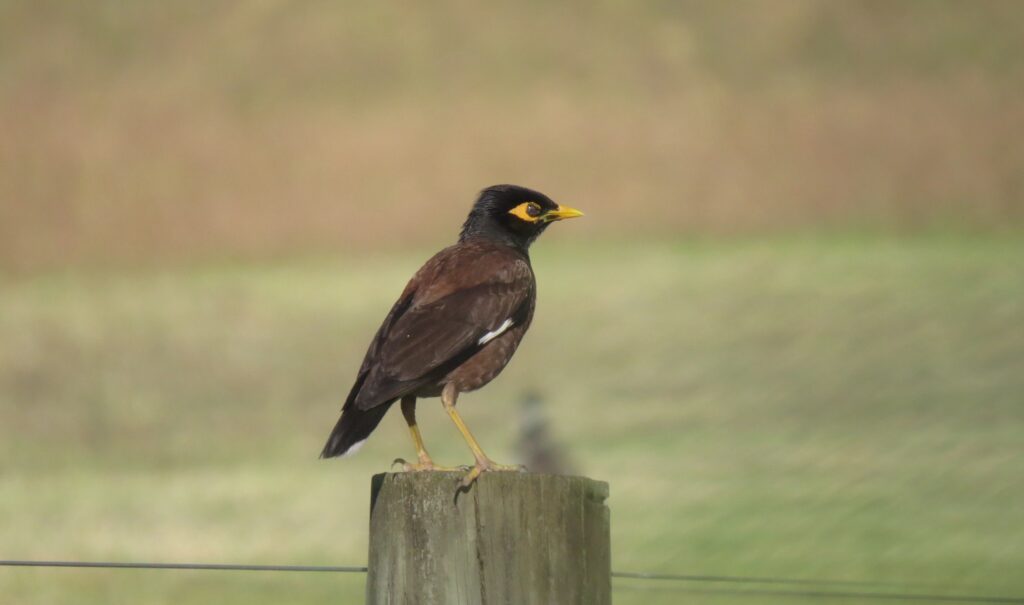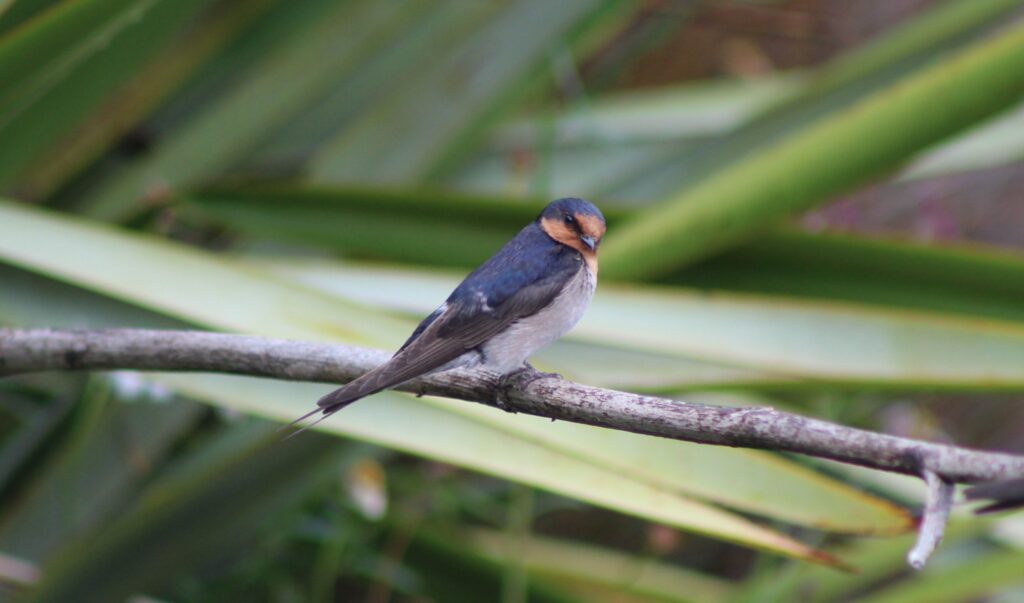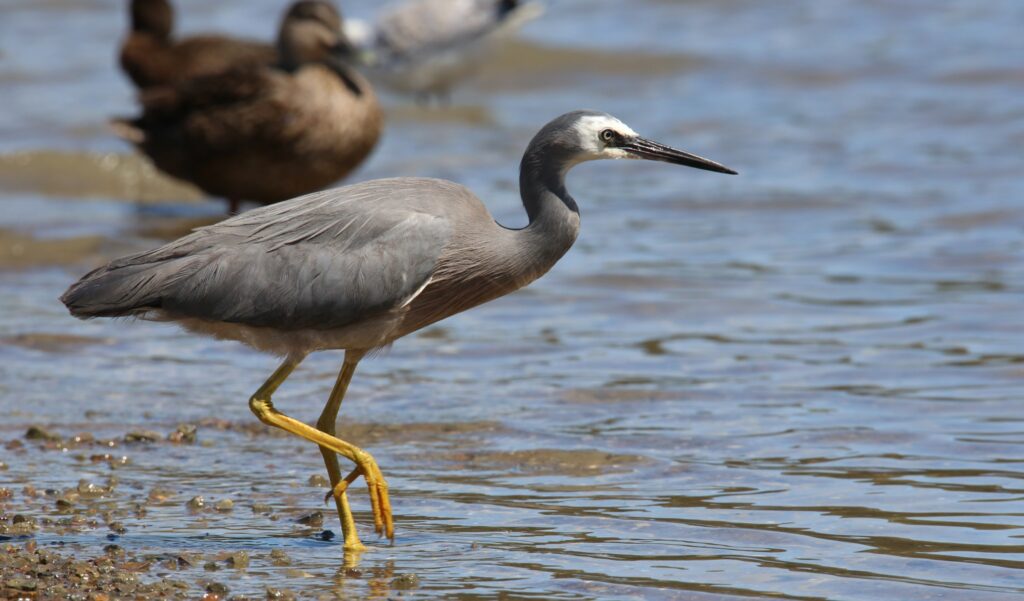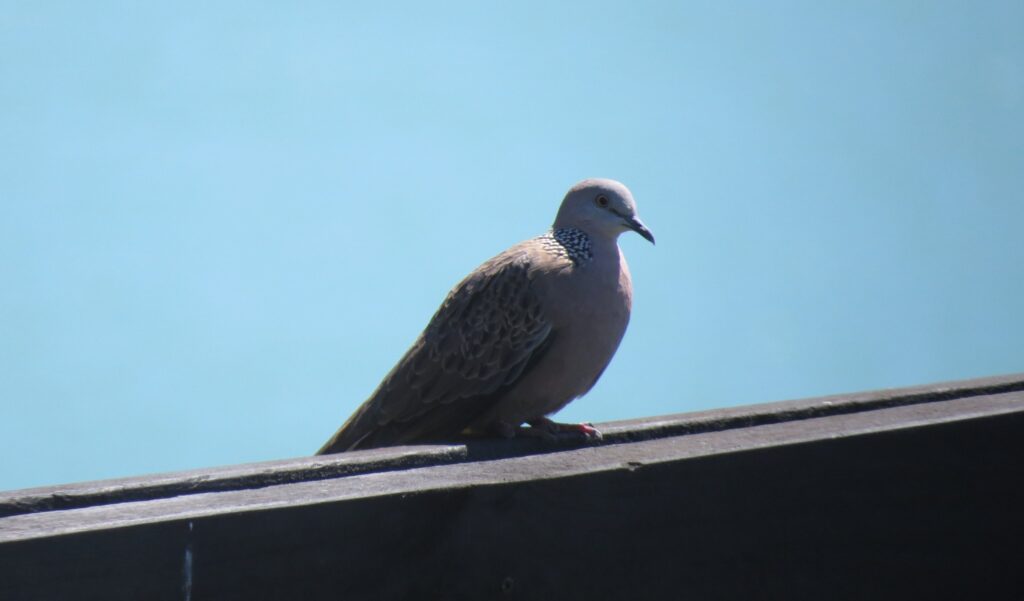Order) Psittaciformes
Family) Strigopidae
Species) Endemic
Length) 38 – 44 cm
Weight) 340 – 400 g
Other Names) Bush parrot, brown parrot, kawkaw
Threats) Deforestation, stoats
Identification
The Kaka is a large, olive-brown parrot with grey-white crown, red-orange underwing and deep crimson belly, located in tree covered areas around Palm beach and Onetangi.
Generally heard before they are seen, kākā are large, forest-dwelling parrots.
Males have a noticeably longer and deeper upper mandible and bigger head than females but this is generally only apparent when the two sexes are seen side by side.
They let out a harsh, repeated, rhythmic “ka-aa” when flying above the forest canopy, harsh grating “kraak” alarm call when disturbed. Also a variety of loud, musical whistles, but these vary markedly from place to place. Males give a soft “tsee-tsee-tsee” call during the pre-copulatory display and when showing potential nest sites to females. Females soliciting food from their mates, and juveniles soliciting food from their parents, utter a guttural, repeated “aa-aa” call.
Kākā are obligate forest birds that obtain all their food from trees. They are adept fliers, capable of weaving through trunks and branches, and can cover long distances, including over water.
Breeding
Kākā mainly breed in spring and summer, but occasional second broods can extend breeding into winter.
Nests are generally in tree cavities over 5 metres above the ground, but can be at ground level on offshore islands. The nest floor is lined with small wood chips.
The typical clutch size is 4. The female alone incubates the eggs and cares for the nestlings but is fed by the male throughout the breeding season. Both parents feed the fledglings which often fledge before they are able to fly, or even climb, effectively.
Food
Kaka consume seeds, fruit, nectar, sap, honeydew and tree-dwelling, especially wood-boring, invertebrates.
Kaka congregate at localised food sources such as flowering rata, but often forage alone for wood-boring insect larvae, fruit or seeds.
Waiheke Locations
Palm Beach Trees – Ive spotted them many times feeding and congregating in trees in Palm beach areas.
Hekerua bay trees – Heard and spotted by many locals congregating in trees
Flying above waiheke suburbs – Heard before seen with their loud calls.
Onetangi Reserve/Victoria road
Kaka are flying birds so they can really be anywhere on Waiheke but not just Waiheke they are all over New Zealand, these are just areas I’ve spotted them and photographed.
Gallery
